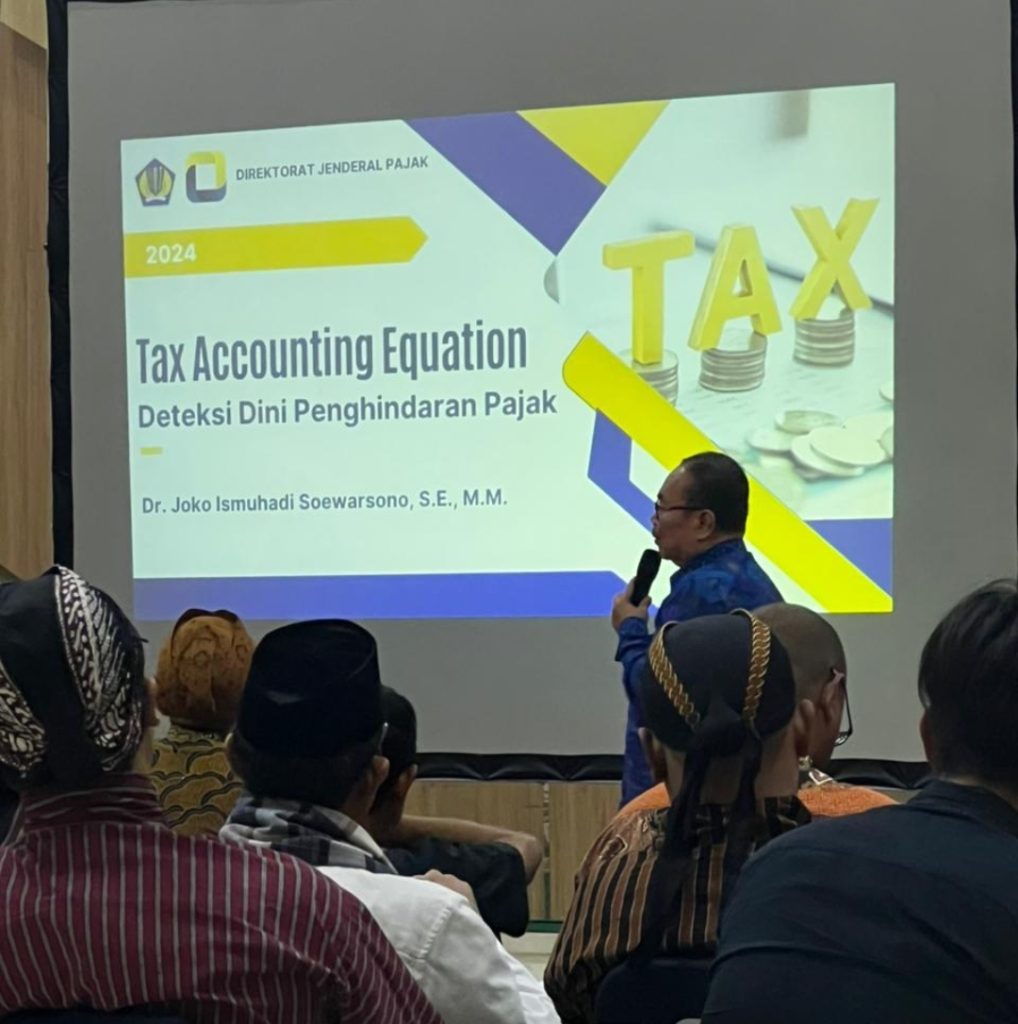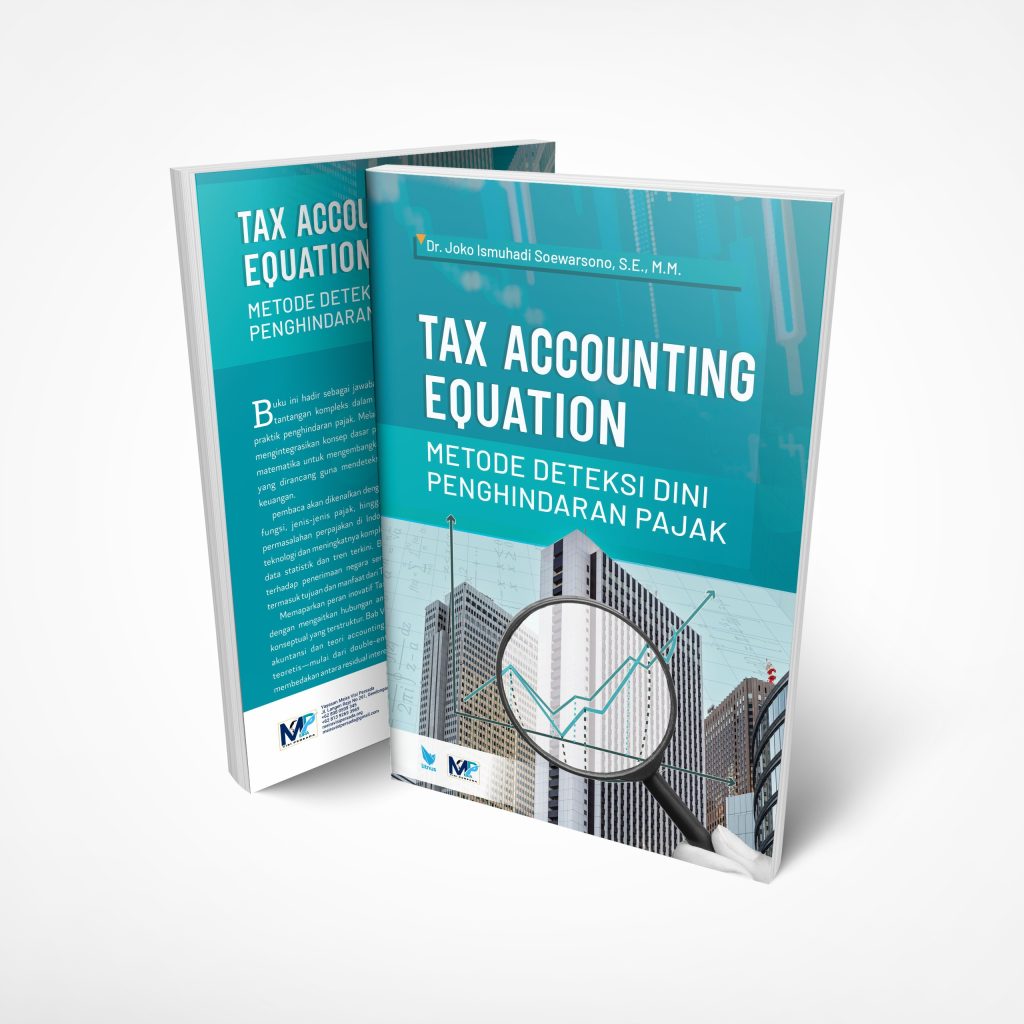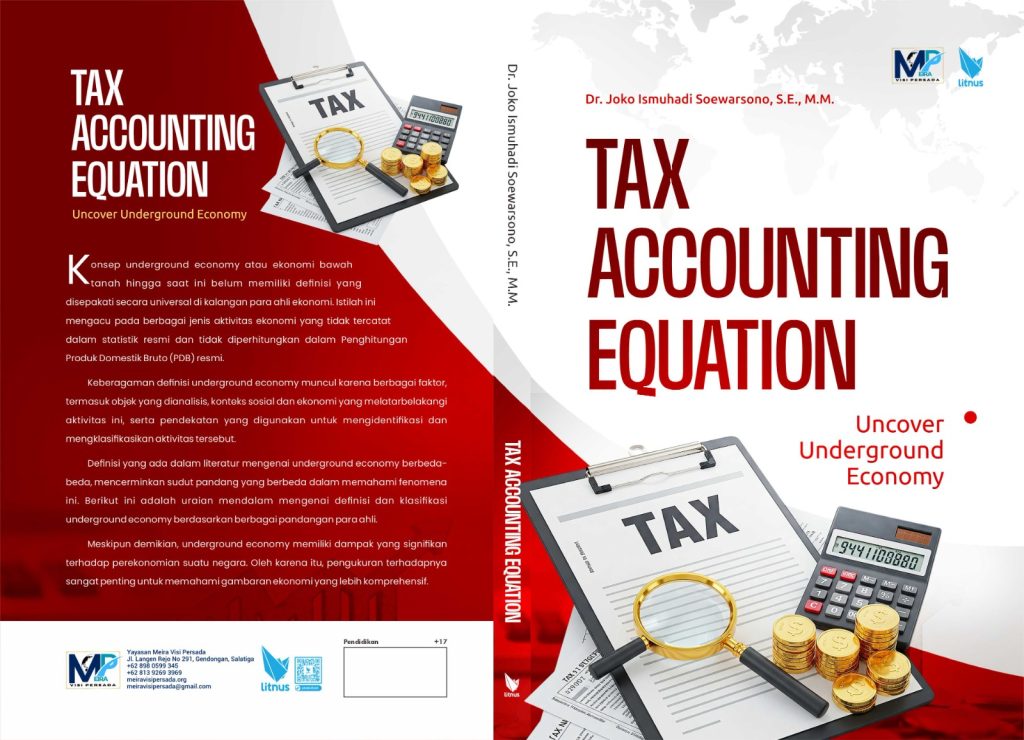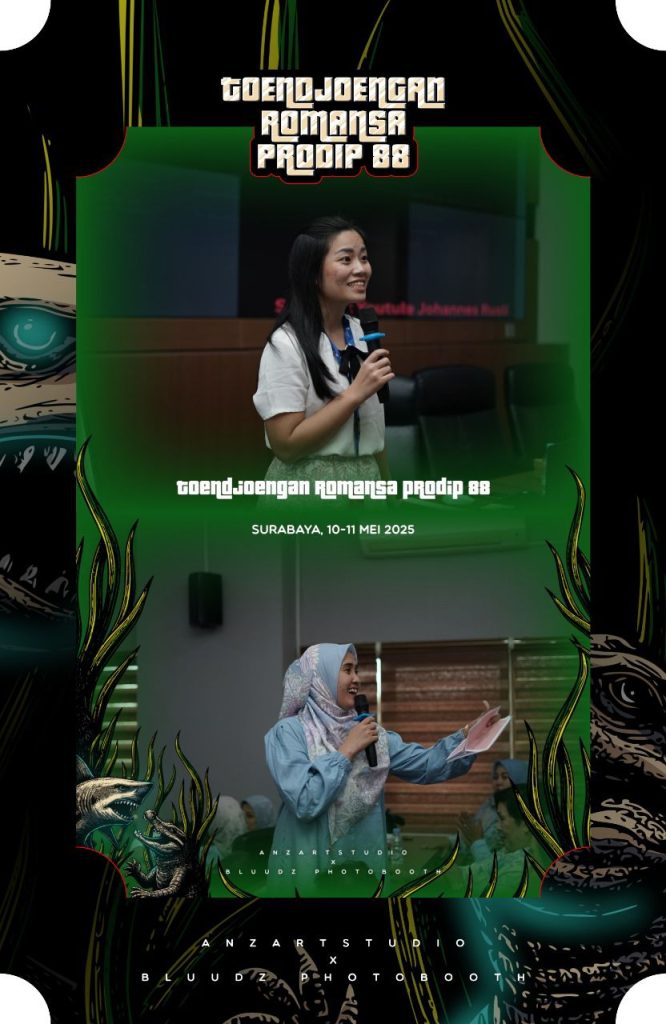
Dr. Joko Ismuhadi’s Tax Accounting Equation: A Forensic Approach to Indonesian Tax Analysis
- Ekonomi
Friday, 11 April 2025 15:20 WIB

Jakarta, fiskusnews.com:
1. Introduction: The Imperative of Enhanced Tax Analysis in Indonesia
Indonesia’s pursuit of robust economic development is intrinsically linked to the effectiveness of its tax revenue collection mechanisms. Achieving the aspiration of becoming a high-income economy by 2045 necessitates a tax system capable of adequately funding public services and infrastructure development. However, the nation has grappled with a relatively low tax-to-GDP ratio, which has remained around 10-12% over the last decade, indicating a significant potential for increased revenue mobilization. This challenge is further underscored by data from earlier periods, with one analysis revealing a tax ratio of 14.58% between 2001 and 2017 , and another pointing to a drop to 9.77% in 2019, accompanied by a substantial tax gap. These figures collectively highlight the ongoing need for innovative strategies to enhance tax revenue collection in Indonesia.
A major impediment to optimizing tax revenue in Indonesia is the pervasive issue of tax evasion and the considerable scale of its underground economy. Research suggests that the value of the underground economy constitutes a significant portion of the nation’s Gross Domestic Product, leading to substantial potential losses in tax revenue. One study explicitly illustrates the commonality of tax evasion among Indonesian firms, emphasizing the considerable additional revenue that could be collected if this practice were curtailed. This finding is corroborated by experimental research indicating that approximately one-quarter of formal firms in Indonesia indirectly admit to evading taxes. The persistent and quantified evidence of significant tax evasion and a large underground economy underscores the critical need for more effective detection methodologies.
To effectively address these deep-rooted challenges, Indonesia requires advanced tax analysis methodologies that can transcend the limitations of conventional auditing techniques. These new approaches must be capable of uncovering increasingly sophisticated methods of tax evasion and identifying the often-hidden activities within the underground economy. Existing research highlights the inherent limitations of relying solely on taxpayer-submitted tax returns and emphasizes the necessity of incorporating third-party data and employing indirect methods to accurately assess the true extent of tax evasion. In this context, Dr. Joko Ismuhadi’s Tax Accounting Equation (TAE) emerges as a novel approach that warrants careful consideration for its potential to enhance Indonesia’s tax analysis capabilities.
2. Unveiling the Mechanics of Dr. Joko Ismuhadi’s Tax Accounting Equation (TAE)
The foundational principle of financial analysis rests upon the fundamental accounting equation: Assets = Liabilities + Equity. This equation articulates the balance between a company’s resources and the claims against those resources. Dr. Joko Ismuhadi’s proposed Tax Accounting Equation (TAE), formulated as Revenue = Expenses + Assets – Liability, represents a notable rearrangement and a potentially targeted reinterpretation of this fundamental principle, specifically tailored for the purposes of tax analysis.
This formulation of TAE can be viewed as derived from the expanded accounting equation, which incorporates elements from the income statement, such as revenues and expenses. A common form of the expanded equation is Assets + Expenses = Liabilities + Equity + Revenue. TAE isolates Revenue, expressing it as a function of Expenses, Assets, and Liabilities. This rearrangement suggests a deliberate emphasis on the relationship between these key financial elements as a means of detecting potential tax discrepancies. The logic likely posits that deviations from an expected relationship between these variables could indicate instances of underreported revenue or overstated expenses, which are common tactics in tax evasion.
A central aspect of TAE, as indicated in the user’s query, is the significant emphasis placed on the analysis of liability accounts, with a particular focus on bank overdrafts. The underlying rationale is that discrepancies in these accounts can serve as strong indicators of tax evasion or the presence of hidden economic activity. The logic suggests that if a company is successfully concealing revenue from tax authorities, it might exhibit a reduced need for borrowing, potentially leading to lower or unexpectedly stable bank overdraft levels despite reporting low overall profitability. Conversely, the existence of substantial and unexplained bank overdrafts in the context of reported low revenue could point towards undisclosed financial activities, potentially linked to undeclared income streams that are not reflected in the company’s financial statements. This focus on bank account analysis aligns with established forensic accounting principles, which involve a meticulous scrutiny of financial records to identify anomalies and inconsistencies that might signal fraudulent activities. Forensic accounting practices often involve searching for hidden or unapproved fees on loans and overdrawn accounts , and the analysis of bank statements, including overdrafts, is a key component in assessing financial motives in forensic investigations.
The user’s query and several news sources consistently present TAE as a “forensic tool” specifically designed for the purpose of uncovering activities within the underground economy (UEA). This aligns with the broader objectives of forensic accounting, which applies accounting principles and investigative techniques to detect and prevent financial fraud and irregularities. By carefully analyzing the relationships defined within the TAE equation, tax authorities could potentially identify patterns or deviations in a company’s financial data that suggest the presence of unreported revenue or concealed assets, which are characteristic of activities within the underground economy. For instance, a company that consistently reports low revenue but maintains a high level of assets and exhibits low liabilities, including minimal bank overdrafts, might warrant further investigation as it could be indicative of hidden income sources. This forensic application of TAE aims to provide a more systematic and analytical method for identifying UEA compared to relying solely on macroeconomic indicators or broad estimations of the shadow economy.
3. Scrutinizing the Academic and Professional Reception of TAE
Upon a thorough examination of the provided academic publications , a notable absence of direct discussion or analysis of Dr. Joko Ismuhadi’s Tax Accounting Equation (TAE) is evident. While these publications explore various facets of Indonesian taxation, such as tax knowledge among millennials and Generation Z , factors influencing tax aggressiveness , the prevalence and characteristics of tax evasion , fluctuations in tax revenues and structures , the implementation and impact of tax amnesty programs , the relationship between tax incidence and avoidance , the influence of ownership structures on tax avoidance , the relevance of tax accounting information to users , the determinants of the book-tax gap , strategies for detecting profit shifting , and the scale and drivers of the underground economy , none of them specifically address TAE. This lack of direct academic engagement could imply that the concept is relatively new and has not yet been widely adopted or subjected to rigorous scrutiny within the formal academic literature. Alternatively, it is possible that discussions of TAE are primarily occurring within professional circles or in specialized publications that were not captured by the search parameters.
Despite the absence of direct mentions of TAE, the provided academic sources offer valuable insights into the broader landscape of scholarly work on Indonesian taxation. These studies demonstrate an active engagement by the academic community in understanding various aspects of the Indonesian tax system, including taxpayer behavior, the effectiveness of tax policies, and the challenges of tax evasion. This existing body of research suggests a potential for future academic exploration and evaluation of TAE, should the concept gain wider recognition and traction within the field. The academic community’s ongoing interest in enhancing tax compliance and combating tax evasion could provide a conducive environment for the scholarly analysis of TAE’s potential contributions.
Given the initial lack of explicit academic critique within the provided materials, it becomes important to consider where discussions and evaluations of TAE might be taking place within Indonesian tax professional circles. This could involve examining publications from prominent professional accounting organizations such as the Institute of Indonesia Chartered Accountants (IAI) and the Indonesian Institute of Public Accountants (IAPI). These organizations often publish journals, newsletters, and other materials that could feature discussions on new methodologies in tax analysis. Additionally, exploring Indonesian tax-specific journals and professional forums or conferences could yield valuable information regarding the professional reception and any existing critiques of TAE. For example, the IAI publishes the Akuntan Indonesia Magazine , which might contain articles or discussions relevant to TAE. Similarly, DDTCNews is recognized as a trusted Indonesian tax news portal that could potentially host professional discussions or analyses of emerging tax analysis techniques. Furthermore, tax forums and conferences held in Indonesia often serve as platforms for professionals to share and critique new ideas and methodologies in the field. Therefore, a targeted investigation into these professional resources would be necessary to gain a comprehensive understanding of the current professional perspective on Dr. Joko Ismuhadi’s Tax Accounting Equation.
4. Uncovering Official Recognition and Practical Implementation by Indonesian Tax Authorities
A review of the provided information pertaining to Indonesian tax authorities, particularly the Directorate General of Taxes (DJP) , does not reveal any explicit official recognition or detailed discussion of Dr. Joko Ismuhadi’s Tax Accounting Equation (TAE). While these sources provide insights into the DJP’s established procedures for conducting tax audits, the ongoing implementation of core tax administration systems like Coretax, and the increasing utilization of digital forensics in tax investigations, there is no direct mention of TAE as an officially endorsed methodology or tool within these contexts. This absence could suggest that TAE is still in a conceptual or developmental phase and has not yet been formally integrated into the official tax analysis framework employed by the Indonesian tax authorities. It is also possible that information regarding any internal or experimental use of TAE by the DJP is not publicly accessible through the channels explored in this search.
Furthermore, the provided snippets do not contain specific examples or case studies that illustrate the practical application of TAE in identifying tax discrepancies or instances of underground economic activity within Indonesia. While news articles allude to TAE’s potential as a forensic tool for uncovering the underground economy, they do not offer concrete examples or detailed accounts of its successful implementation and the resulting findings in real-world scenarios. This lack of practical illustrations makes it challenging to definitively assess the real-world effectiveness and the specific mechanisms through which TAE is applied to the analysis of financial data in the context of Indonesian taxation. Without such examples, it remains difficult to gauge the practical utility and the specific insights that TAE can provide in the detection of tax evasion and hidden economic activities.
5. Positioning TAE within the Existing Indonesian Tax Analysis Framework
The Indonesian tax landscape currently employs a range of methodologies for tax analysis and enforcement, each contributing to the overall effort to ensure compliance and maximize revenue collection. Traditional tax audits, conducted by the Directorate General of Taxes (DJP) , form a cornerstone of this framework. These audits are initiated based on various criteria, including discrepancies in submitted tax returns, declarations of losses, or specific taxpayer actions such as requests for the deletion of their Taxpayer Identification Number (NPWP). The audit process involves a thorough examination of a wide array of financial documents, encompassing financial statements, tax reports, bank account records, and relevant contracts. Recognizing the advancements in technology, the DJP is progressively incorporating digital tools into its auditing practices, with audits now being conducted online through platforms like PSIAP (Core Tax System). Moreover, digital forensics is emerging as an increasingly critical tool for the processing and analysis of electronic data, playing a vital role in the detection and investigation of tax fraud.
Complementing these efforts is the recognized field of forensic accounting in Indonesia, which serves as a specialized discipline essential for the detection and investigation of a broad spectrum of financial crimes, including tax fraud. Forensic accounting uniquely blends accounting principles with investigative techniques and legal acumen to uncover financial irregularities and to provide credible evidence that can be used in potential legal proceedings. The techniques employed within forensic accounting are diverse, including the detailed analysis of financial records, the thorough investigation of suspicious transactions, and the utilization of specialized software and sophisticated data analytics tools. Notably, the importance of specialized forensic tax knowledge in the prevention of financial statement fraud, a practice often linked to underlying tax evasion, is also increasingly acknowledged within the Indonesian context.
Considering the existing tax analysis framework in Indonesia, Dr. Joko Ismuhadi’s Tax Accounting Equation (TAE), with its specific formula and its emphasis on the detailed analysis of liability accounts, particularly bank overdrafts, could potentially represent a more targeted and quantifiable enhancement to the current methodologies. While traditional tax audits do involve the examination of liabilities and bank records, they may not specifically focus on the TAE equation itself or the nuanced interrelationships between overdraft levels, revenue, expenses, and assets as proposed by TAE. Similarly, while forensic accounting encompasses a broad array of investigative techniques aimed at uncovering financial misconduct, TAE offers a specific analytical lens centered around a particular accounting equation. Therefore, TAE might offer a distinct and potentially more direct method for identifying specific indicators of tax evasion, such as the concealment of revenue, compared to the often broader and more qualitative approaches typically employed in general forensic accounting investigations or standard tax audits. This potential for a more focused and quantifiable analysis warrants further investigation into TAE’s unique contributions and its potential for seamless integration into Indonesia’s existing tax analysis framework.
6. Evaluating the Potential Impact and Inherent Limitations of TAE Implementation
If Dr. Joko Ismuhadi’s Tax Accounting Equation (TAE) demonstrates its effectiveness in accurately identifying tax discrepancies and successfully uncovering activities within the underground economy (UEA), its widespread adoption could potentially lead to a significant improvement in tax compliance rates across Indonesia. By providing tax authorities with a more refined and targeted method for detecting potential instances of tax evasion, TAE could act as a deterrent to non-compliant behavior and encourage taxpayers to report their financial information more accurately.
This anticipated increase in tax compliance would likely have a direct and positive impact on Indonesia’s overall tax revenue. By bringing previously untaxed economic activities into the formal tax system, TAE could contribute to expanding the national tax base and increasing the total tax collection. This, in turn, could play a crucial role in improving Indonesia’s tax-to-GDP ratio, a key indicator of fiscal health and the government’s capacity to fund essential public services and development initiatives. News sources support this potential for revenue enhancement by emphasizing TAE’s intended role in identifying and addressing the challenges posed by the underground economy.
Despite the promising potential of TAE, its implementation as a primary tool for tax analysis and enforcement in Indonesia is likely to encounter several inherent limitations and practical challenges. The effectiveness of TAE would be significantly dependent on the availability of comprehensive and accurate financial data from taxpayers. Any inconsistencies, intentional misreporting, or inaccuracies in the reported financial information could substantially undermine the reliability of the analysis derived from the equation. Furthermore, taxpayers who are intent on evading taxes might adapt their financial reporting and operational practices to circumvent detection through TAE. This could involve structuring their financial activities in ways that obscure the relationships highlighted by the equation or employing more sophisticated methods of concealing income and assets.
The successful implementation of TAE would also necessitate a significant investment in resources and the provision of adequate training for tax auditors and enforcement personnel. Tax authorities would need to develop a thorough understanding of the principles underlying TAE and acquire the skills necessary to apply the methodology effectively to real-world financial data. This could require the development of specialized training programs and the allocation of sufficient personnel and technological infrastructure. Integrating TAE into Indonesia’s existing tax administration systems, including ongoing initiatives like the Coretax system , could also present considerable technical and logistical challenges. The experience with the implementation of Coretax itself highlights the complexities involved in adopting new technology-driven solutions within the tax administration framework. Additionally, like any analytical tool, TAE might be susceptible to generating false positives, potentially flagging taxpayers who are fully compliant for further scrutiny. This could lead to an increased administrative burden for both the tax authority and the taxpayers, and it could also potentially erode taxpayer trust in the fairness and accuracy of the tax analysis process.
7. Exploring the Landscape of Alternative and Complementary Tax Analysis Methods in Indonesia
Indonesia’s approach to tax analysis and enforcement involves a spectrum of methodologies currently utilized by tax authorities and professionals. Traditional tax audits , which entail in-depth examinations of financial records and tax returns to ensure compliance with tax laws, form a fundamental component of this landscape. Complementing these audits is the specialized field of forensic accounting , which plays a critical role in investigating instances of suspected tax fraud and other financial irregularities, often requiring specialized expertise and techniques. The increasing prevalence of digital financial data has also led to the adoption of digital forensics , which focuses on the extraction and analysis of electronic evidence relevant to tax-related investigations. The existence of these various established methods suggests that Dr. Joko Ismuhadi’s Tax Accounting Equation (TAE) might be most effectively positioned as a complementary tool, enhancing the existing analytical capabilities rather than serving as a complete replacement for current practices.
Technology plays an increasingly vital role in bolstering tax analysis capabilities in Indonesia. The Directorate General of Taxes (DJP) is actively implementing advanced systems, such as the Coretax system , aimed at streamlining tax administration processes and significantly enhancing data analysis capabilities. Furthermore, the utilization of Generalized Audit Software (GAS) and other Computer-Assisted Audit Techniques (CAATs) enables tax auditors to efficiently process and analyze large volumes of financial data, facilitating the identification of potential anomalies and red flags. The application of sophisticated data analytics and machine learning algorithms is also being explored as a means to predict tax non-compliance patterns and to identify potential instances of tax evasion. This growing emphasis on leveraging technology for tax analysis indicates a potentially receptive environment for the adoption of TAE, particularly if its application can be effectively integrated with the existing technological infrastructure and analytical tools already in use.
In addition to these methods, financial ratio analysis is employed to identify potential indicators of fraudulent financial reporting, which can often be linked to underlying tax evasion schemes. By examining the relationships between different financial variables within a company’s financial statements, analysts can identify entities that exhibit unusual or suspicious patterns that might warrant further investigation. Moreover, the establishment and promotion of whistleblowing systems provide a valuable mechanism for individuals to report suspected violations of tax laws and regulations, offering tax authorities an important source of information that can trigger further inquiry and investigation. These alternative and complementary methods underscore the multi-faceted approach that Indonesia is taking to ensure tax compliance and to combat tax evasion, with TAE potentially adding another layer of sophisticated financial analysis to this existing framework.
8. Conclusion and Recommendations: Towards a More Robust Indonesian Tax Analysis Framework
Dr. Joko Ismuhadi’s Tax Accounting Equation (TAE) presents a promising and potentially valuable approach to strengthening tax analysis in Indonesia, particularly in its specific focus on uncovering underground economic activities through a detailed examination of the interrelationships between key accounting elements. The emphasis on analyzing liability accounts, especially bank overdrafts, offers a targeted avenue for detecting potential tax discrepancies.
Given the current limited availability of extensive academic research and publicly documented case studies detailing the practical application and demonstrated effectiveness of TAE, further investigation is warranted. A rigorous evaluation of its theoretical foundations, practical feasibility, and empirical validity within the Indonesian tax context is essential. Direct engagement with Dr. Joko Ismuhadi and a focused exploration of Indonesian-specific academic and professional publications represent crucial next steps in this evaluation process.
Considering the existing comprehensive landscape of tax analysis methods currently employed in Indonesia, TAE might be most strategically positioned as a complementary tool. Its specific focus on particular accounting relationships could enhance the detection capabilities of existing frameworks, providing a more granular and potentially quantifiable approach to identifying indicators of tax evasion.
Based on this analysis, the following preliminary recommendations are offered for consideration by tax policy analysts and senior officials in Indonesia:
- Pilot Implementation: Initiate a carefully designed pilot program within the Indonesian tax authority to assess the practical application of TAE. This pilot could focus on specific sectors or taxpayer segments identified as having a higher propensity for tax evasion or involvement in the underground economy.
- Direct Engagement: Facilitate direct communication and knowledge sharing with Dr. Joko Ismuhadi to gain a deeper understanding of the theoretical underpinnings of TAE, its intended practical application, and any existing evidence or data supporting its effectiveness.
- Integration Assessment: Conduct a thorough assessment of the potential for integrating TAE with the existing tax administration infrastructure and technological tools currently in use, such as the Coretax system and data analytics platforms. This would help determine the feasibility of leveraging TAE’s analytical capabilities within the current operational framework.
- Support Academic Research: Encourage and support independent academic research on TAE by Indonesian universities and research institutions. This would foster a more in-depth understanding of its strengths, weaknesses, and potential for refinement within the specific context of the Indonesian tax system.
- Develop Targeted Training: If initial evaluations of TAE are promising, consider developing specialized training programs for tax auditors and enforcement personnel. This would build the necessary capacity within the tax authority to effectively understand and apply the principles and techniques of TAE in their work.
By thoughtfully considering the potential of TAE and strategically exploring its integration within a comprehensive tax analysis framework, Indonesia can take significant strides towards enhancing tax compliance, effectively addressing the challenges posed by the underground economy, and ultimately optimizing its tax revenue to support its ambitious national development goals.
Table 1: Summary of Existing Tax Analysis Methods in Indonesia
| Method Name | Brief Description | Snippet ID(s) | Potential Advantages | Potential Disadvantages |
| Traditional Tax Audit | Detailed examination of financial records and tax returns to ensure compliance with tax laws. | – | Well-established legal framework, comprehensive review of taxpayer information. | Potentially time-consuming, may not always uncover sophisticated evasion techniques. |
| Forensic Accounting | Application of accounting principles and investigative techniques to detect and prevent financial fraud. | –– | Specialized expertise in fraud detection, can uncover complex schemes, provides evidence for legal proceedings. | Can be resource-intensive, may require specific technical skills and legal understanding. |
| Digital Forensics | Extraction and analysis of electronic data relevant to tax-related investigations. | Ability to analyze large datasets efficiently, can recover deleted data, crucial for modern digital economies. | Requires specialized technical expertise and tools, data integrity and chain of custody are critical. | |
| Data Analytics & ML | Use of software and algorithms to identify patterns, anomalies, and predict tax non-compliance. | Can process vast amounts of data quickly, identify hidden patterns, improve targeting of audits. | Requires significant investment in technology and expertise, accuracy depends on data quality and algorithm design. | |
| Financial Ratio Analysis | Examination of relationships between financial variables to identify unusual patterns indicative of fraud. | Relatively inexpensive and easy to perform, can flag companies for further investigation. | May generate false positives, relies on the accuracy of reported financial data. | |
| Whistleblowing Systems | Mechanisms for individuals to report suspected tax violations to tax authorities. | Provides valuable leads and information from internal sources, can uncover hidden activities. | Reliability of information can vary, requires protection for whistleblowers to encourage reporting. |
Reporter: Marshanda Gita – Pertapsi Muda
Share
Berita Lainnya
The Integration of STEM in Law Enforcement: Unpacking the “Ismuhadi Equation” and Charting a Responsible Future
The STEM CEL Framework: A Comprehensive Analysis for Enhancing Tax Collection and Ratio in Indonesia
Core Tax: Otak Nalar DJP
Prabowo Segera Bentuk Badan Penerimaan Negara
Tatax Academy Selenggarakan Webinar Online: Strategi Mudah Perhitungan PPh 21 Masa Desember
Rekomendasi untuk Anda

Berita Terbaru
Eksplor lebih dalam berita dan program khas fiskusnews.com
Tag Terpopuler
# #TAE
# #TAX ACCOUNTING EQUATION
# #TAX FRAUD
# #TAX EVASION














